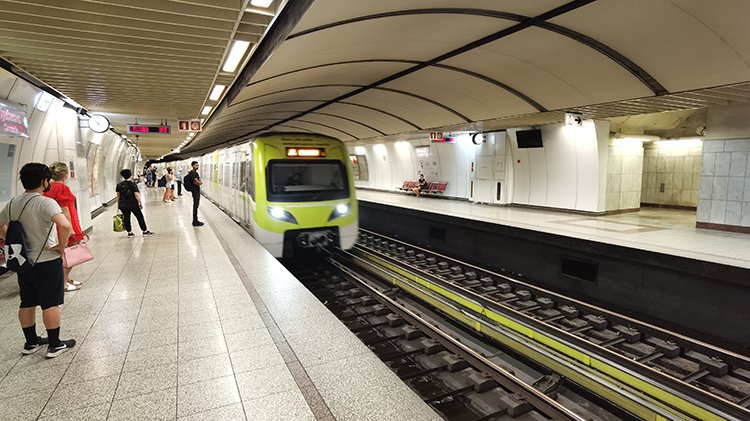Metro Guide 2025: Lines - Map - How to get a ticket

Lines
| Line | Colour | Route |
|---|---|---|
| Line 1 | Green | Piraeus - Kifissia |
| Line 2 | Red | Anthoupoli - Elliniko |
| Line 3 | Blue | Dimotiko Theatro - Airport |
Click the link to visit the relevant page for more details.
Map
Select the arrow on the top left of the map to open the bar with the stations or the square icon on the top right to open in a new window.
Below is a list of the best places I recommend you to stay:
- (€€€) NJV Athens Plaza (⭐ 8.4) a 5-star hotel 1-2 minutes from Syntagma station. It offers luxurious rooms and a restaurant
- (€€) Nur Aparthotel Athens (⭐ 9.3) luxurious rooms on Ermou Street near the square. No breakfast is provided but there are many options to eat around
- (€€) Athens Utopia Ermou (⭐ 8.4) luxurious stay on Ermou Street just a few minutes walk from Syntagma Square
How do I get a ticket
For regular use of the Metro the rechargeable Athena Card is recommended. They are charged at the stations at the vending machines or via the Internet. For card details you must visit the official website athenacard.gr.
For a ticket to the Airport read here.
The ticket prices as displayed in the "QUICK TICKET" menu are:
| QUICK TICKET | |
|---|---|
| 90 minute single | 1.20 € |
| 10 + 1 single ticket pack | 12.00 € |
| Airport 90 minutes | 9.00 € |
| 2 single ticket pack | 2.30 € |
| Daily ticket | 4.10 € |
| 5 day ticket | 8.20 € |
Specifically, in the "Purchase Ticket" menu tickets are displayed categorized:
| Airport | |
|---|---|
| Airport 90 minutes | 9.00 € |
| Athens & Airport, Round | |
|---|---|
| Athens & Airport, Round 3 days | 20.00 € |
| Athens & Airport, Round 90 Minutes | 16.00 € |
| Single | |
|---|---|
| 5 single-ticket pack | 5.70 € |
| (and all tickets from "QUICK TICKET") | |
| Airport Express Bus | |
|---|---|
| Airport Express Bus 90 minutes | 5.50 € |
Once you have selected your ticket you then choose the payment method with cash or card.
The single ticket is used on Metro, Tram and city buses. You can use it as many times as you need, as long as you validate it on all means you enter within that 90 minute period. It is still valid until you disembark even if the 90 minutes have passed. "Trips" refer to ticket packages that you buy at better prices.
The "Recharge" menu is used if you want to charge your Athena Card. Insert the card into the slot and follow the instructions. Vending machines accept coins, banknotes and bank cards. Foreign bank cards may not be accepted so it's better to have change.













